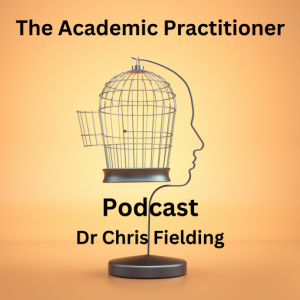This month, I am taking a closer look at this article from the Journal of Emotional and Behavioural Difficulties by Caron Lawson and colleagues.
The authors are clinical psychologists working with the children and families . They set the study in the context of worrying numbers of children with neuroodevelopmental and/or mental health difficulties being excluded from school. They cite Timpson’s (2019) UK government review which suggested that children with SEN were seven times more likely to be excluded from school that those without. A recent population level study involving 500,000 children in Wales (John et al. 2022) had similar findings.
Lawson et al. explore whether routine screening of pupils following their second exclusion (internal or fixed term) was feasible in a school setting. They also hypothesised that children with two or more fixed term exclusions would show higher scores on measures of neurodevelopment and mental health difficulties than those without.
Methodology
Forty secondary school children (from two schools) took part in the study. Twenty with two or more exclusions and twenty without. All were screened using the six tools below and feasibility was assessed through questionnaire responses from children, parents and school staff on the acceptability of the process where 80% of participants would recommend others to take part in the process.
The screening tools used were:
The Strengths and Difficulties self-report, parent and teacher questionnaires (SDQ; Goodman 1999) – An often used screening tool looking at conduct, hyperactivity, emotional symptoms, peer problems and prosocial behaviour.
Revised Child Anxiety and Depression Scale – Self Report, Short Version (RCADS-25; Ebesutani et al. 2012) – RCADS-25 is a scale that assesses the frequency of symptoms and anxiety and depression.
Conners-3 Self Report, Parent and Teacher Short Forms (Conners et al. 1997) – Used to assess ADHD symptoms through 6 constructs: inattention, hyperactivity/impulsivity, learning problems, aggression, executive functioning (parent version) and peer/family relations.
The Wechsler Abbreviated Scale of Intelligence – second edition (WASI-II; Wechsler and Hsiao- pin 2011) – The WASI-II is used to measure cognitive ability and gives composite scores estimating verbal comprehension, perceptual reasoning, a full scale IQ and an abbreviated IQ.
Clinical Evaluation of Language Fundamentals – Version 4 (CELF- 4; Semel, Wiig, and Secord 2003) – The CELF – 4 can be used to assess both expressive and receptive language skills to identify a language disorder or delay.
Children’s communication checklist 2 (CCC-2; Bishop 2003) – The CCC2 is a parent report measure for language impairment, communication problems and autism.
Questionnaires were completed by children, teachers and parents whilst the cognitive and language assessments were conducted by the lead researcher with each participant.
Results
- SDQ scores indicated that difficulties with conduct problems and hyperactivity were significantly higher in excluded pupils than the control group. This was similar in the parent reported data where there was a large disparity between excluded pupils and the control group.
- Excluded pupils showed higher rates of anxiety and depression than the control group on the RCADS-25
- On the Conners -3, excluded children scored significantly higher than the control group for ADHD measures
- 80% of the excluded group had parents reporting that their child had communication difficulties of clinical significance. The control group was in the average range.
- The cognitive ability of the excluded group was significantly lower than the control group with some children falling within the low average range and three pupils falling in the ‘extremely low’ range.
- The CELF-4 showed that the excluded group had significantly lower language scores than the control group.
Conclusions
The authors conclude that screening excluded pupils is feasible and acceptable. However, they also report the poor response rate from parents in some cases and suggest collecting their views in a different way. They also conclude that excluded children consistently show higher levels of need (cognitive ability, ADHD, ASD, language and communication disorders) than control groups. This is consistent with other studies in the field.
Strengths and limitations
This study builds on prior work and identifies an issue that is very much in need of further exploration. The data analysis is robust and the results of the screening are useful points for discussion and add to the body of working looking at the characteristics of excluded pupils in the UK.
When it comes to the feasibility of scaling this work, I found the conclusion of this study frustrating. Significant elements of the process were conducted by a clinical psychologist. There are a large number of pupils in the UK receiving suspensions and school leaders do not have the timely access to psychologist support that would be needed. I would have liked to see screening tools that could be delivered by school staff.
Implications for practice
As the head of an alternative provision, I would like to robustly screen pupils arriving at our centre for cognitive, neurodevelopment and mental health needs. I would also like to be able to work with schools so that this can happen at an early stage and prevent exclusion. This study is useful in that it adds to the body of work looking at the needs of excluded pupils and also provides a workable screening model. We have limited access to psychologist input and need to take this model and adapt it in a way that can be delivered by school staff.
John A, Friedmann Y, DelPozo-Banos M, Frizzati A, Ford T, Thapar A (2022) Association of school absence and exclusion with recorded neurodevelopmental disorders, mental disorders, of self-harm: a nationwide, retrospective, electronic cohort study of children and young people in Wales, UK. Lancet Psychiatry 9 23-34
Timpson, E. 2019. Timpson Review of School Exclusion. London: Department of Education Dandy Booksellers Limited.

